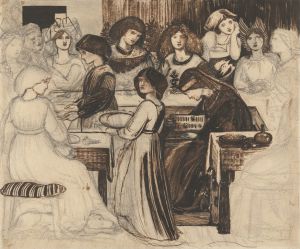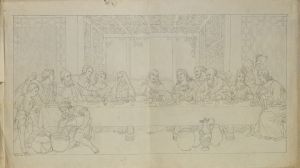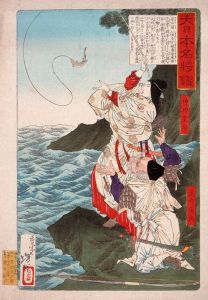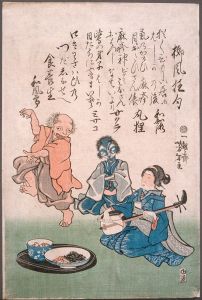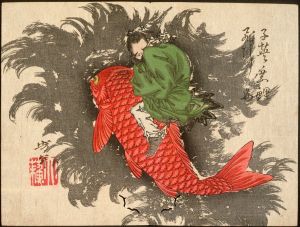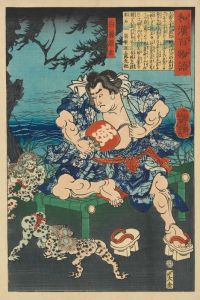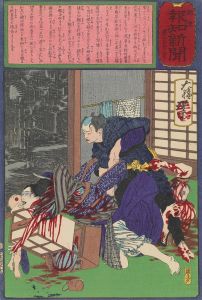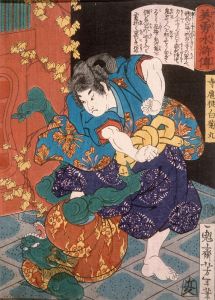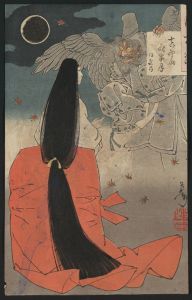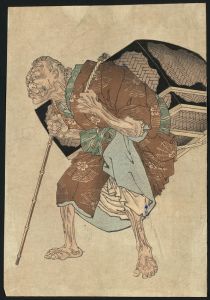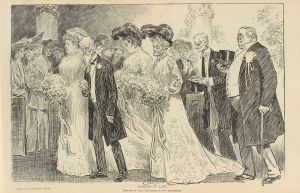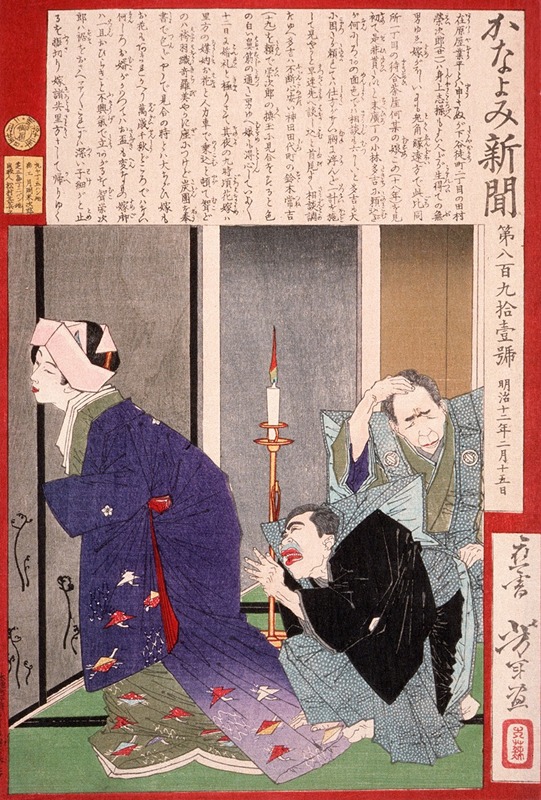
Disappointed Bride; Kono Flees Upon Discovering That the Ugly Bridegroom Is Not Whom She Promised to Marry
A hand-painted replica of Tsukioka Yoshitoshi’s masterpiece Disappointed Bride; Kono Flees Upon Discovering That the Ugly Bridegroom Is Not Whom She Promised to Marry, meticulously crafted by professional artists to capture the true essence of the original. Each piece is created with museum-quality canvas and rare mineral pigments, carefully painted by experienced artists with delicate brushstrokes and rich, layered colors to perfectly recreate the texture of the original artwork. Unlike machine-printed reproductions, this hand-painted version brings the painting to life, infused with the artist’s emotions and skill in every stroke. Whether for personal collection or home decoration, it instantly elevates the artistic atmosphere of any space.
Tsukioka Yoshitoshi (1839–1892) was a prominent Japanese ukiyo-e artist, known for his innovative and dramatic woodblock prints. One of his works, titled Disappointed Bride; Kono Flees Upon Discovering That the Ugly Bridegroom Is Not Whom She Promised to Marry, reflects Yoshitoshi's mastery of storytelling and his ability to depict intense emotions through visual art. This piece is part of his broader body of work that often explored themes of human emotion, folklore, and historical narratives.
The print illustrates a dramatic moment in which a bride, named Kono, reacts with shock and dismay upon realizing that her bridegroom is not the person she had been promised to marry. The title itself provides a clear narrative context, indicating the bride's disappointment and subsequent decision to flee. Yoshitoshi's work frequently drew upon historical and literary sources, and this particular piece may have been inspired by a specific tale or cultural motif, though the exact origin of the story is not definitively documented.
Yoshitoshi's style in this print exemplifies his later works, which are characterized by bold compositions, vivid colors, and a focus on the psychological depth of his subjects. The emotions of the characters are conveyed through their expressions and body language, a hallmark of Yoshitoshi's ability to bring dramatic scenes to life. The use of intricate details and dynamic poses enhances the tension and movement within the scene.
This print belongs to the genre of ukiyo-e, which flourished during the Edo period (1603–1868) and continued into the Meiji era (1868–1912), when Yoshitoshi was active. Ukiyo-e artists often depicted scenes from kabuki theater, historical events, and everyday life, as well as supernatural and romantic themes. Yoshitoshi, in particular, is celebrated for his ability to blend traditional ukiyo-e techniques with a modern sensibility, making his works stand out during a time of significant cultural and societal change in Japan.
While specific details about the creation date or series context of this print are not readily available, it is consistent with Yoshitoshi's interest in exploring human emotions and moral dilemmas. His works often resonate with viewers due to their timeless themes and the artist's technical skill.
As with many of Yoshitoshi's prints, Disappointed Bride serves as both a visual narrative and a reflection of the cultural and artistic currents of its time. It remains an example of his enduring legacy in the world of Japanese art.





